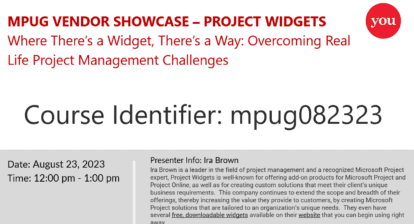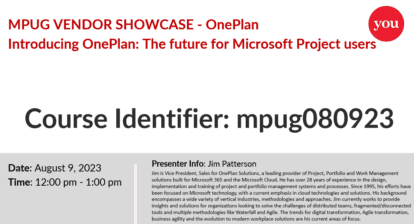If you’re ever in the position of needing to sell your senior executives on the idea of using Microsoft products for your project and portfolio management (PPM) work, take a lesson from Microsoft itself: Exploit the contents of analyst reports.
Recently, for example, Arpan Shah, the director of the Microsoft Project business crowed about his products’ strong rankings in the 2010 Gartner Magic Quadrant for IT PPM. His blog entry on the subject even includes a public link to the report, which Microsoft licensed for redistribution. By making this report freely available for a period, Microsoft boosts its case for serious consideration by major companies that only want to work with best-of-breed tools from vendors with staying power.
And that’s the same approach you can use in making the case for a move to Project 2010 from earlier releases or even to continue use of a formal PPM approach within your operations.
The primary analyst firms that follow the PPM market include not only Gartner, but also IDC and Forrester. In each case the analysis typically examines a broad range of competing products that meet certain criteria (such as a feature set that addresses the most critical customer needs) to help readers understand how to distinguish one product from another and to lay out what the analysts view as a given product’s strengths and weaknesses. In other words, these evaluations help to position products.
By quoting judiciously from these reports, your effort to sell your boss on the use of Project and Project Server 2010 can go beyond these anemic arguments:
“We’ve always used Project and that’s what our project managers know best!”
Or
“Project 2010 has a whole bunch of new features that will save us time!”
How much more compelling to put together a memo with these bold-faced jewels:
As IDC has reported in “IT Project and Portfolio Management 2010 Vendor Analysis”: Organizations emerging from last year’s financial crisis with complex sourcing and increased management challenges demand automated solutions for improved communication, metrics, and governance… For IT project portfolio management in particular, [Project 2010 includes] tight integration with Visual Studio 2010 and Team Foundation Server (TFS). Enabling visibility across the life cycle with a portfolio view potentially enables strategic decision making, metrics, and prioritization across development projects… Using SharePoint as a central collaboration point has also helped to drive growth generally for Microsoft Project as an all-purpose project management solution and offers chances for greater communication across far-flung distributed resources for IT PPM as well.
Or how about this excerpt from the Gartner report, “MarketScope for Project and Portfolio Management Applications” to cater to that manager of yours who can’t get enough SharePoint or is continually trying to tighten the budget?”
“Microsoft Project Server 2010 is a landmark release for Microsoft, and for PPM prospective users and existing Project Server customers, because it is in this release in which Microsoft includes SharePoint 2010 as a the foundation for workflow, document management and collaboration… From a license fee perspective, Microsoft Project Server 2010 can be one of the more cost-effective…PPM systems.”
Gartner Matt Light offers a concise list of strengths and challenges in his mini-report worth referencing, “Microsoft Project 2010 Adapts to Thrive.” Among the strengths he references: a “smoother transition than previous upgrades”; the ability to let “online users do basic scheduling without a desktop client”; and the addition of a focus shift from “single project delivery to better project selection.”
Forrester’s latest full evaluation of PPMs came in late 2009 with the publication of “Forrester Wave: Project Portfolio Management, Q4 2009.” But you won’t find that report cited in Microsoft blogs. (Here, we’re linking to it from Primavera owner Oracle’s sponsorship of the report.) The report appeared months before Project 2010 was released, and the analyst firm promoted other products as being more robust than Project 2007. Although Forrester doesn’t list an update to its PPM evaluation on its schedule of upcoming projects, we believe the company will have to update its appraisal at some point in the near future as part of helping guide its customers through choosing tools to help with the painful IT project prioritization process brought on by the economic downturn.
When you’re faced with the job of persuading your leadership to upgrade or maintain its commitment to the use of the latest version of Microsoft Project, there’s no crime in bringing in the big names to help you build your business case. They’ve seen almost every product out there; they’ve had to help their clients sort through the PPM options; and they know the grass isn’t necessarily greener anywhere else, but they will let you know where it’s patchy.







